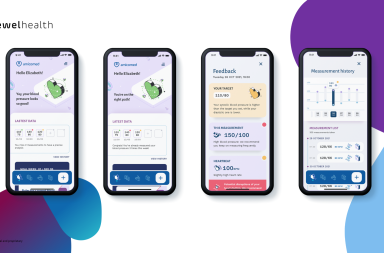In recent years, the data-driven approach has been adopted by various industries and markets. In the pharma sector, especially amidst a technological revolution such as the current one, it has become a fundamental pillar for digital activities, which have increased dramatically in the last year as a result of the health emergency that has totally changed the habits of patients.
Developing a data-driven decision-making flow certainly creates many opportunities to intercept the real needs of doctors and patients. At the same time, however, it can cause major problems in implementation, management, and the resulting decision-making process.
In this short article we will try to analyse the main issues related to digital analytics and how to correctly approach web and app tracking.
The Right Software
The first element to consider is the choice of software. Today the selection of available tools and software is vastand there are many different options.
Each tool should be chosen for its features, but above all, for the possibilities of integrating it with the entire digital ecosystem. This crucial point allows businesses to save resources while simultaneously collecting and cross-referencing data from different sources. For example, identifying a digital analytics tool that can be integrated with a CRM and all other tools already in use would definitely be a winning choice.
What Needs to Be Analysed?
Another element to consider is the measurement plan. What metric do you actually want to analyse? One common mistake is an unjustified voracity for data. Collecting everything full-time may seem to be the simplest and most intelligent option, but in reality, the frantic collection of data frequently brings major and costly problems with it.
First of all, collecting everything is practically impossible; moreover, collecting useless data thatyou don’t know what to do with negatively impacts website and app performance. Secondly, the more data is collected, the more resources we need to use to compile and analyse it. The most sensible and efficient choice when initiating a new digital project is to first define the KPIs, then define a prudent tracking strategy aimed at collecting only the data of interest based on those KPIs. This means that before you begin a new project, you need to identify the tangible objectives you want to achieve. This may seem trivial, but it is not, nor is it always obvious. In fact, the objectives must be S.M.A.R.T. (i.e., specific, measurable, accessible, realistic, and timed) since they are what define the metrics and dimensions they are measured by, which consequently defines an effective tracking strategy.
Reports
An often-neglected aspect is the presentation of the collected data, i.e., reporting. It is very important to define different templates for the various corporate and other stakeholders who will need to read that data, taking their interests and skills into consideration. It would be useless, for example, to show a detailed dashboard with overly technical data to the CEO, who will probably only look at two or three KPIs. Creating audience-specific reporting templates makes them easier to read and understand.
Corporate Culture
As a final point, it is really very important to underline that one of the most crucial obstacles to overcome in introducing a data-driven approach is the corporate culture. Many managers may be too attached to their own experience and knowledge of the reference market, which can make it difficult for them to delegate even important decisions based on numerical evidence, especially if it contradicts their personal convictions. As briefly illustrated above, building a structure capable of taking real advantage of data and making informed decisions requires commitment at different levels within a company. Having a truly data-driven approach requires technical and analytical efforts and strong changes in the corporate culture.



